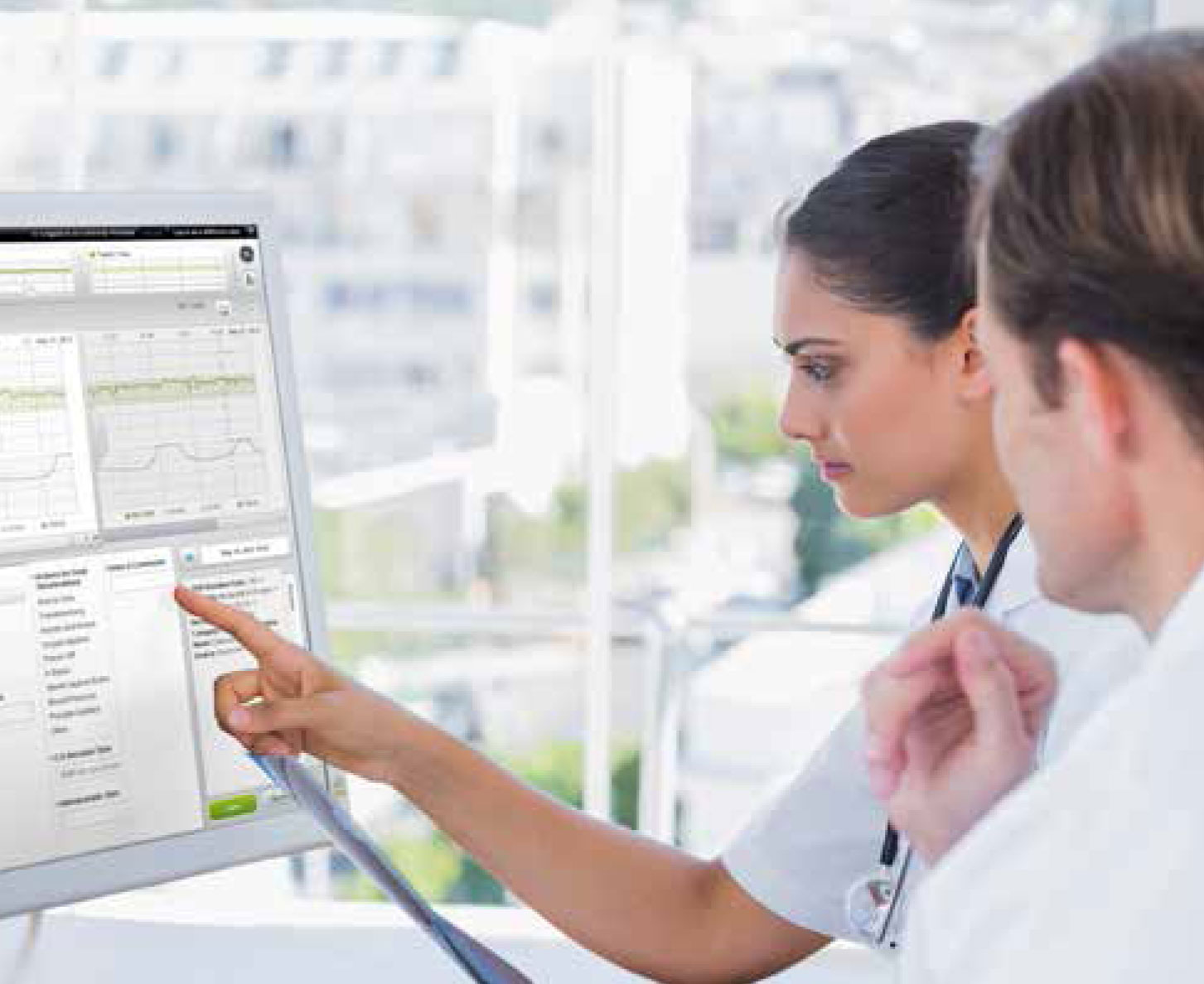Opening the channels of communication.

Why is connectivity needed?
Interfaces support the goals of the healthcare enterprise in creating a tightly connected, detailed and paperless electronic medical record.
Benefits:
Physician – “Enhances my ability to be a better provider by having the patient data flow back and forth to the vital electronic system I use every day.”
Nurse – “Provides me with the information I need to care for my mom and babies when I need it most.”
CIO – “Helps drive productivity and efficiency across my perinatal care environments, while supporting my facility’s reporting and intercommunication goals. It also provides a richer platform to accomplish our end user needs for specific data elements.”
Types of interfaces
- ADT (Admission-Discharge-Transfer)
- Lab interface
- Outbound interfaces
- COLDfeed (Computer Output to Laser Disk)
- Charge interface
- EMRinterface
- CPOE results indicator
- Centricity Perinatal Connect module
- Medication Administration review
- Pediatrix BabySteps®
Interfaces
- ADT (Admission-Discharge-Transfer) is an inbound interface to manage patient demographics, allergies, height, weight and locations. This functionality is patient-and workflow focused, allowing you to collect basic information from the patient just one time – typically through a pre-admission registration process
– and automatically populates that information into key fields in Centricity Perinatalwhenanexpectantmother arrives. - Lab interface is an additional typeof inbound interface. Results from your facility’s lab system can be imported for faster review in Centricity Perinatal, helping to improve efficiency.
- Outbound interfaces, either through a discrete data interface or a summary/ report interface, sends information out of Centricity Perinatal and typically into another EMR to foster interoperability and data sharing and also helps facilitate meaningful use requirements.
- COLD feed (Computer Output to Laser Disk) is another method to send a summary of data out of Centricity Perinatal, but is more “printer job-like” than outbound interface. COLD feed has a very readable format and is easy to view across the continuum of care or within medical records. Its format (pdf), location and file naming can be configured, and it can be used by document scanning systems or health information repositories or exchanges.
- Charge interface pulls items from current nursing documentation and converts them into numeric quantities – helping to improve revenue cycle efficiencies or validation of current charge process prior to being sent to the billing system. Charges will be automatically generated on current documentation, helping clinicians save time from entering information into another system or another document.
- EMR interface assists in reducing double documentation between the prenatalvisitandtheactualhospital stay. For the nine months of prenatal visits, information is documented and made available in Centricity Perinatal. The delivery and discharge summary isalsomadeavailabletotheOBoffice after delivery.
- CPOE results indicator
This inbound interface uses result indicators to alert clinicians when an order has been placed in the hospital physicians order entry system. This is a review only inbound interface. - Centricity Perinatal Connect module creates a new level of interoperability by interfacing with a hospital’s EMR system. Now, clinicians can document and view fetal monitor strips on the same screen and at the same time. Centricity Perinatal Connect module also creates the ability to view pertinent patient information in correlation with the fetal monitoring strip through inbound and outbound interfaces.
- Medication Administration review Allows the clinician to review administered medications documented in your eMar within Centricity Perinatal. This is an inbound interface to Centricity Perinatal which eliminates the need to double document medications in Centricity Perinatal.
- Pediatrix BabySteps® outbound This outbound interface helps facilitate relevant maternal information going outboundtoaneonataldatabasefor newborns, provides vital signs, daily weightandassessments,andother discrete data for the NICU.
GE Healthcare’s interfaces employ Health Level 7 (HL7) protocol. HL7 is a standardized protocol for exchanging healthcare informationamongequipmentsuppliers. Cooperation from both vendors is still important to ensure the data you need is delivered when and where you need it. Centricity Clinical Gateway (CCG) is an interface engine that Centricity Perinatal uses to exchange data. CCG increases flexibility and reliability of information flow and makes building connections faster and easier to support. Centricity Perinatal interfacing solutions help reduce user data input, reduce duplication of data, automate workflow,
and share information. That helps everyone communicate more easily.
Please contact your GE Healthcare representative for more specific information on interfacing with Centricity Perinatal.
Centricity Perinatal Inbound and Outbound interfaces support the goals of the healthcare enterprise by creating compatible, detailed, and paperless electronic medical records.

Centricity Perinatal can interface with a system that accepts HL7, including the major enterprise EMR systems and physician office EMR software. If you are documenting in your hospital EMR then we recommend further evaluation of Centricity Perinatal – Connect module.

